Reflectors vs refractors: which type of telescope is best?
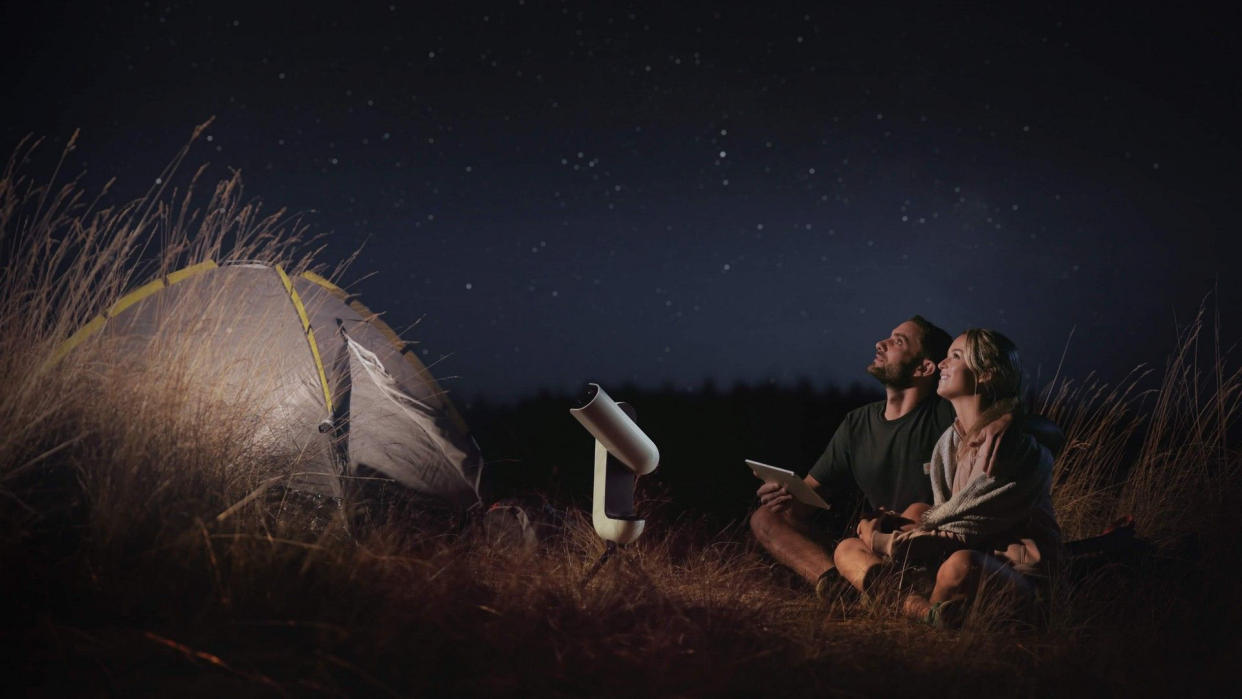
Telescopes are specialist optical instruments that have been around for over 400 years and are useful for many applications including seafaring, military operations and especially stargazing. But not all telescopes are made equal. In fact, there are two distinct categories that telescopes fall under, and some sub-categories within these: refractors and reflectors.
Each type of telescope has its own benefits and drawbacks so let’s take a look at what they are and which telescope you should buy for your particular purposes. And if you want to dive down into more detail, we also have guides to the best telescopes for astrophotography, the best lenses for astrophotography and the best binoculars.
Refracting telescopes explained
Refractor telescopes are probably the most recognisable to the general public. Long, thin tubes with glass at either end often encased in metal or a composite plastic, refractors work in the same way as camera lenses by refracting (bending) the light until focus is achieved inside the telescope and is then resolved through an eyepiece through which the user looks.
Although long in construction due to the physical way it manipulates the light entering the tube, a refractor telescope is often lightweight and inexpensive options make good telescopes for hobbyist astronomers.
Reflecting telescopes explained
Reflector telescopes (some types are also known as Newtonians) are, generally, wider and fatter than reflectors. They have an open end and utilize a mirror at the base of the tube to reflect light to a secondary mirror before reflecting toward the eyepiece for viewing.
In effect, reflecting telescopes use a large reflecting mirror instead of the large objective lens of a refracting telescope. They bounce the image back towards the eyepiece rather than passing it straight through.
Because reflectors use mirrors to reflect the light, rather than refract it through a lens, reflectors are generally more useful when needing to drink in more light from dark skies.
Incidentally, the largest telescopes on earth are reflectors and not refractors, because of the difficulty in grinding and processing a large lens required for a refractor telescope.
If you’re a photographer then a reflector’s make-up may not seem as familiar as a refractor and there may be a little maintenance and adjustments required to keep things sharp but there’s plenty of support in the form of manuals that ship with telescopes and online video tutorials to help with alignment and maintenance procedures.
Other telescope types
There are also hybrids of the above telescope types which come in multiple flavours. Cassegrain telescopes are reflecting telescopes which use convex and concave mirrors to shorten the length of the telescope but attain a much longer focal length than would otherwise be possible.
Schmidt-Cassegrains add a correction plate (aka a lens) at the front of the telescope to help further with optical adjustments for accurate night sky viewing.
For astrophotographers that want to take photographs of the night sky there are bespoke eyepiece adapters for different types of camera brands, have a look at a reputable dealer like BH Photo video or Wex Photo to find the right camera adapter for your device.
However, if you want to take long exposure images or take consecutive dark and light frames over a period of minutes and hours then you’ll definitely need to find a telescope with a motorized mount that automatically tracks the night sky to keep in-line with celestial objects.
Best refracting telescopes in 2022

1. Celestron AstroMaster 70AZ LT Refractor
This inexpensive refractor requires no tools to set up and is great for beginners and new astronomers
Optical design: Refractor | Aperture: 70mm (2.76") | Focal length: 700mm (28") | Focal ratio: f/10 | Magnifications: 35x and 70x | Finderscope: Red dot finderscope | Mount: Alt-az | Highest useful magnification: 165x
No tools required to set up
Fully coated optics
Night use only
Narrow aperture means slightly duller views
A budget-friendly refractor, the AstroMaster 70AZ LT has fully coated optics with minimal color fringing and ships with two eyepieces of 20mm and 10mm. It also has an erect image star diagonal for easier night sky viewing without hurting your neck and a red dot finderscope for spotting celestial objects with ease.
Use the included smartphone adapter to capture photographs and video and use the Bluetooth shutter release for hands-free operation. It’s compatible with Starry Night Basic software which is home to 36,000 objects in its database (they’re not all viewable from all locations, though).
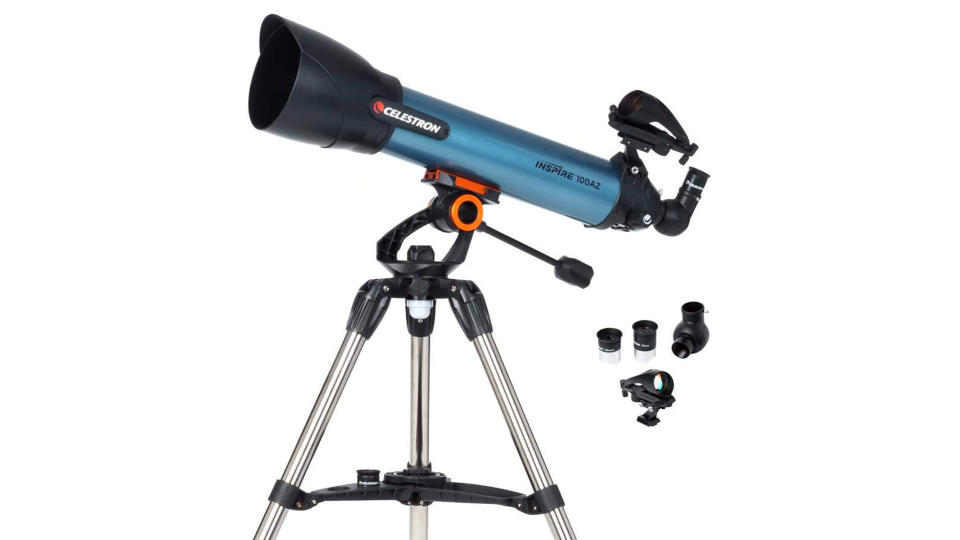
2. Celestron Inspire 100AZ
We’re impressed with the optical clarity of this lightweight refractor telescope
Optical design: Refractor | Mount type: Alt-azimuth | Aperture: 3.94" (100mm) | Focal length: 25.98" (660mm) | Highest useful magnification: 241x | Lowest useful magnification: 15x | Supplied eyepieces: 10mm, 25mm | Weight: 20 lbs. (9.07kg)
Customisable with multiple accessories
Quick to put together
Astrophotographers will find it simple to use
Glass gives slight false colour
Home to the largest aperture in the Inspire line-up, we highly recommend this refractor telescope for amateur astronomers just getting started with their stargazing journey. It comes with two eyepieces, a finderscope, alt-az mount, erect image star diagonal, StarPointer pro red dot finderscope, and an integrated smartphone adapter. Not only that, but it also bundles with a tripod and accessory tray and features an in-built red LED flashlight for easy night-time setup.
Spot the planets, nebulae, and other celestial objects with fair results, just don’t expect the best views in the world but on price alone, you’re getting a heck of a lot of gear for the money.
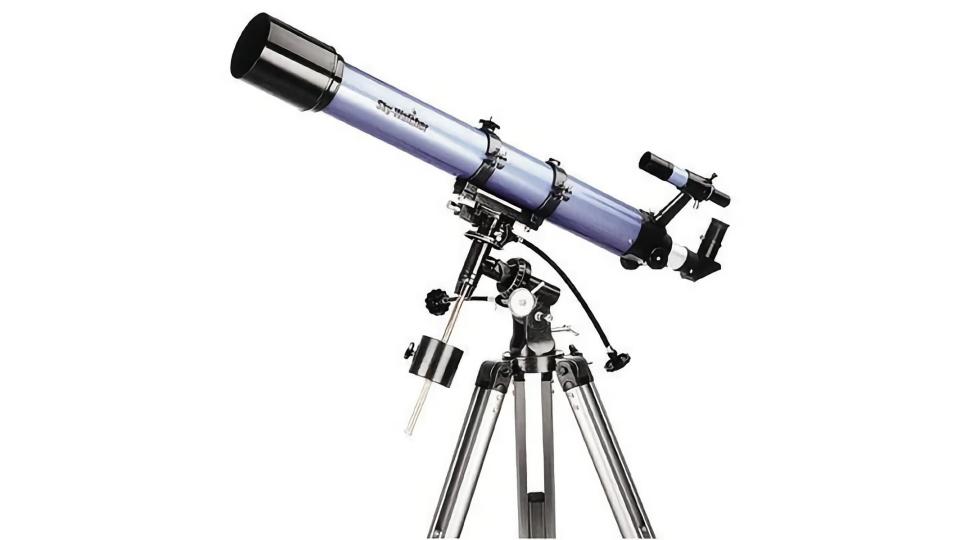
3. Skywatcher Evostar-90 EQ-2
A cost-effective introduction to astronomy with an equatorial mount for simple push-to operation
Optical design: Refractor | Mount type: Equatorial | Aperture: 3.54” (90mm) | Focal length: 35.4" (900mm) | Focal ratio: f/10 | Eyepieces included: 10mm and 25mm | Highest practical magnification: 180x | Weight: 32.4lbs (14.6kg)
Budget friendly price
Equatorial mount
Quite heavy
Getting into astronomy can be an expensive business when purchasing a new telescope but this refractor from Sky-Watcher makes skywatching on a budget possible. It comes with an upgraded equatorial mount, a step-up from the usual alt-azimuth mount that other budget refractors use.
It’s packed with everything the beginner astronomer would need including 25mm and 10mm eyepieces, a 2x Barlow lens and a lightweight aluminium tripod. The increase light gathering ability of the 90mm aperture on this telescope means bright views whether viewing the lunar surface or studying the deeper mysteries of the cosmos.
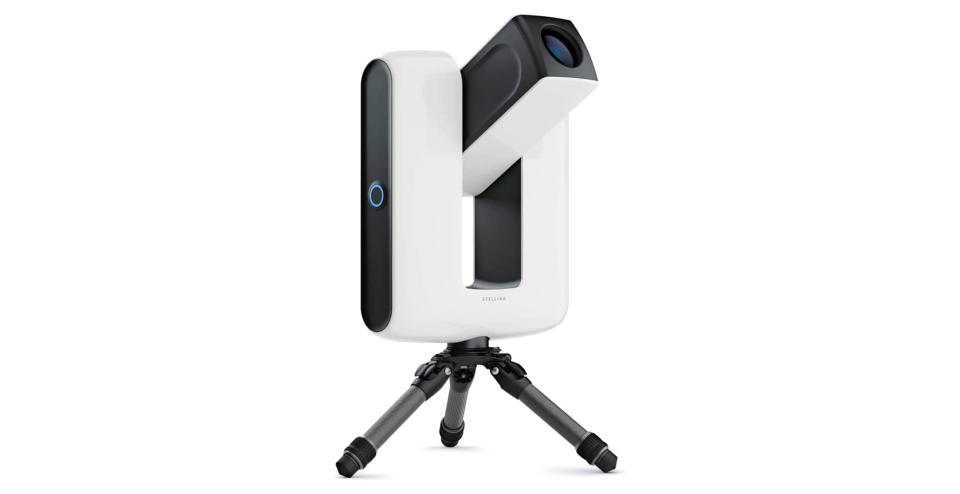
4. Vaonis Stellina Smart Telescope
This futuristic smart telescope is operated via a smartphone and images the night sky at the same time
Optical design: Refractor | Mount type: Go-to Alt-azimuth | Aperture: 3.15" (80 mm) | Focal length: 15.7" (400 mm) | Eyepieces: N/A | Weight: 24.69lbs. (11.2kg)
No adapters required for astrophotos
Quick to set up
Easy to use via the app
More expensive than traditional refractor
Not for purist astronomers
It looks like it’s dropped off a spaceship and into the back yard but actually the Vaonis Stellina is a smart telescope that’s operated non-traditionally through a smartphone app. There’s no eyepiece to speak of and it doesn’t come as a long tube, but instead a neat futuristic-looking cube shape with its own carbon fiber Gitzo tripod.
Inside a Sony-made CMOS image sensor powers this refractor telescope which will automatically find and track objects in the night sky without any astronomy knowledge from the user, making it one of the fastest telescopes to set up and one of the simplest. You’ll be paying for all that intelligent tech though as it doesn’t come cheap. But when you weigh up the price of a traditional refractor, tripod, motor, mount, and all the other accessories, the Stellina’s price doesn’t seem so steep.
Best reflecting telescopes in 2022
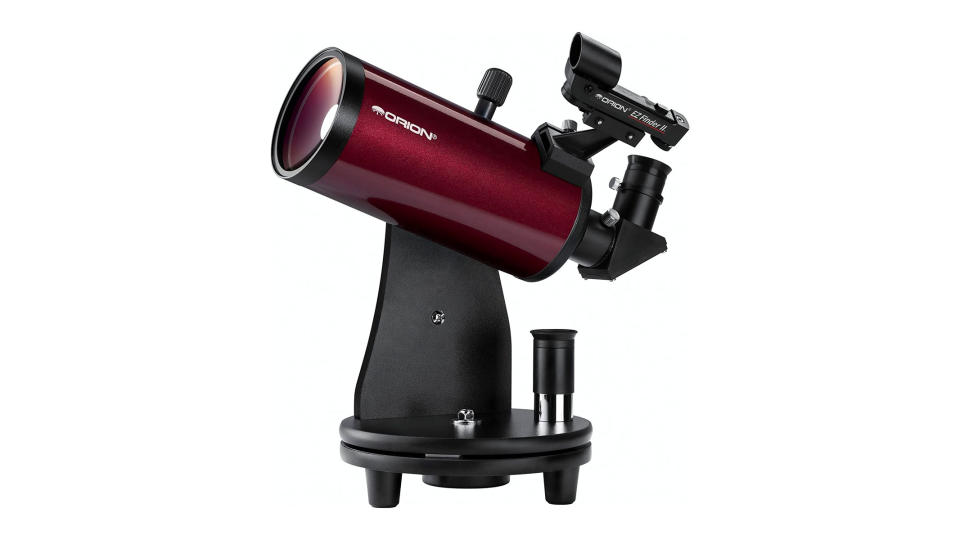
1. Orion StarMax 90mm Tabletop
This Maksutov-Cassegrain tabletop telescope gives high quality views of the stars in a compact package
Optical design: Maksutov-Cassegrain | Aperture: 90mm (3.54”) | Focal length: 1250mm | Focal ratio: f/13.9 | Magnifications: 50x and 125x | Finderscope: EZ Finder II | Mount: Alt-az | Highest useful magnification: 180x
Fast to get started
Ideal for new astronomers
Eyepieces limit use
Tabletop design can be restrictive in use
A put down and go telescope, the Orion StarMax 90mm has a tabletop design that is simple to set up and quick to get using. Lightweight and small, it's easy to take with you and share with others. The telescope has minimal chromatic aberration and gives superior optical quality due to the Maksutov-Cassegrain design that combines the best of reflector and refractor designs.
Intermediate astronomers or those wishing to upgrade may want to change the eyepieces to get better views of the stars and stargazers who want to take things to the next level may want to ditch the tabletop base altogether and use a tripod for full-height use, instead.
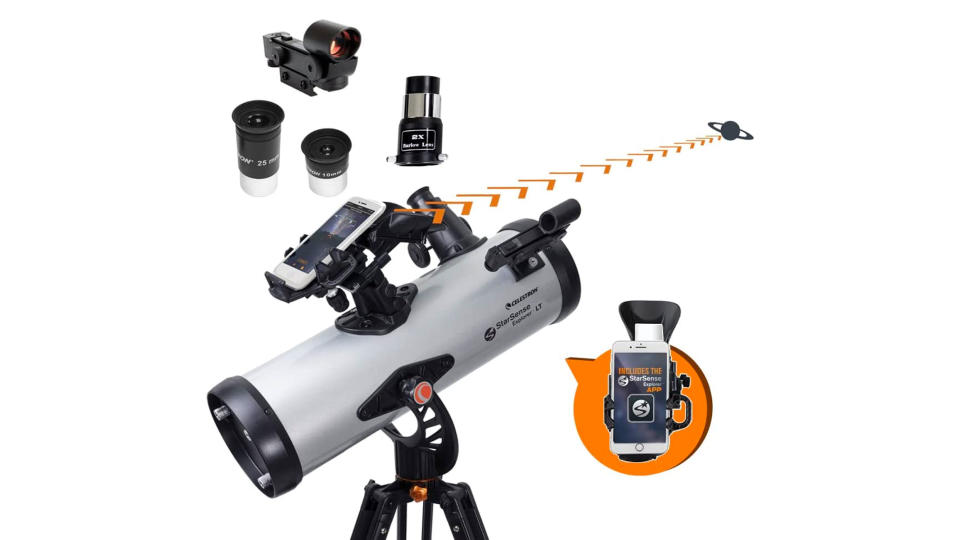
2. Celestron StarSense Explorer LT 114AZ
A good starter reflector for beginner and intermediate stargazers
Optical design: Reflector | Mount type: Alt-azimuth | Aperture: 4.49" (114mm) | Focal length: 39.37" (1000mm) | Highest useful magnification: 269x | Lowest useful magnification: 16x | Supplied eyepieces: 10mm, 25mm | Weight: 10.41 lbs. (4.72kg)
Beginners will find it easy to align
Setup is fast and simple
Find your own targets with its in-built suggestions
Push-to manual use only
For those on-the-go with busy lives, setting up, aligning and going through lengthy checklists to get the best views just isn’t going to cut it. Thankfully the StarSense Explorer LT 114 can be set up fast and gives excellent views through either the 10mm or 25mm eyepieces.
Just 4.72 kg in weight it’s extremely portable as well. To take images of the night sky with your smartphone simply load up the StarSense app and line up the phone’s camera using one of the included eyepieces. The app will intelligently identify what’s in view and identify your viewing direction. Not only that but it’ll give information on the object in view as well, helping beginner astronomers further their knowledge of the night sky while being hands-on with their equipment.
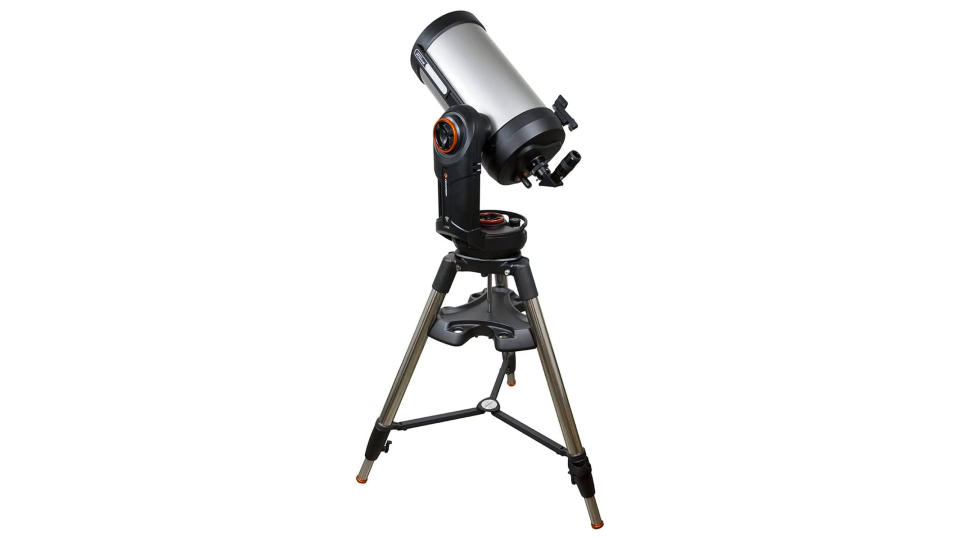
3. Celestron NexStar Evolution 9.25
A step up in price means an improvement in viewing quality giving sharp views throughout
Optical design: Schmidt-Cassegrain | Mount type: Computerized alt-azimuth fork arm | Aperture: 9.25" (235mm) | Focal length: 92.52" (2,350mm) | Highest useful magnification: 555x | Lowest useful magnification: 34x | Supplied eyepieces: 13mm, 40mm | Weight: 62.60 lbs. (28.39kg)
Superb sharp, clear views
Simple to get started
Excellent build quality
Very heavy and harder to transport
Price will put some newcomers off
This Schmidt-Cassegrain is a fine night sky observing instrument that gives crisp, sharp views of the night sky with almost no aberrations whatsoever. Good clarity and punchy contrast make celestial objects stand out in the eyepieces (13mm and 40mm). Heavy and sturdy, this telescope isn’t going anywhere in a light breeze, but that does make it more difficult to carry on location. Thankfully, the Cassegrain design keeps the telescope compact and the alt-az fork arm support the tube very well and slews from object to object effortlessly for up to 10 hours of continuous use.
There’s an AutoAlign process that can be programmed with the hand control, an attachable camera, red dot finderscope and it even ships with an international power adapter for use in multiple countries (which astronomers will likely do with an instrument of this accuracy).

4. Celestron Astro Fi 102
A compact Maksutov-Cassegrain with motorised go-to mount that won’t break the bank
Optical design: Maksutov-Cassegrain | Mount type: Computerized alt-azimuth single fork arm | Aperture: 4.02" (102mm) | Focal length: 52.17" (1,325mm) | Highest useful magnification: 241x | Lowest useful magnification: 15x | Supplied eyepieces: 10mm, 25mm | Weight: 16 lbs. (7.25kg)
Inexpensive motorised telescope
Compatible with smartphone devices
Go-to opens up opportunities for beginners
Can’t operate manually
While this compact Maksutov-Cassegrain can’t be operated manually (except tilting vertically) when it is linked up with the dedicated app on a smart device it scans the night sky well and is quiet in operation.
Relatively inexpensive for a motorised telescope of this quality, views are bright and crisp through the supplied eyepieces (10mm and 25mm) and the telescope ships with everything you need including a star diagonal, finderscope, an integrated smartphone adapter in the lens cap and a tripod with accessory tray. Personally, we think a bit of work can be done to the build quality and the aluminium tripod is a little flimsy, but the single fork arm mount feels solid and robust.
Read more:
• Best telescopes for astrophotography
• Best deep-space telescopes
• Best budget telescopes
• Best binoculars
• Best lenses for astrophotography

